Baden Powell, the hero of Mafeking was right. Even though I have never been a scout, having long followed Groucho Marx’s dictum that I would not be a member of anything which would have me as a member – besides I prefer to travel alone – nonetheless I am an admirer of such proverbs and mottos.
‘Can Do’ has always been a favourite of mine; likewise Carpe Diem – seize the day. ‘Stand on Your Own to Feet’ and ‘He Et what was set before him’ are also noteworthy. And one of my mother’s choicest was, ‘A word to the wise is enough’.
Unfortunately for most people ‘a word’ is not enough (though this is now 3,000 of them) . Every year world-wide tens of thousands of poorly prepared people disappear or meet their end in the back country when they should have just been having fun, admiring the view of that far horizon, peering around the river’s bend to see what’s there and breathing that clear cool air deeply. I hope I can prevent a few such unfortunate events.
What do you suppose is round the bend here (Seaforth River Fiordland NZ 2009)? A moose perhaps? See Lure of the Moose.
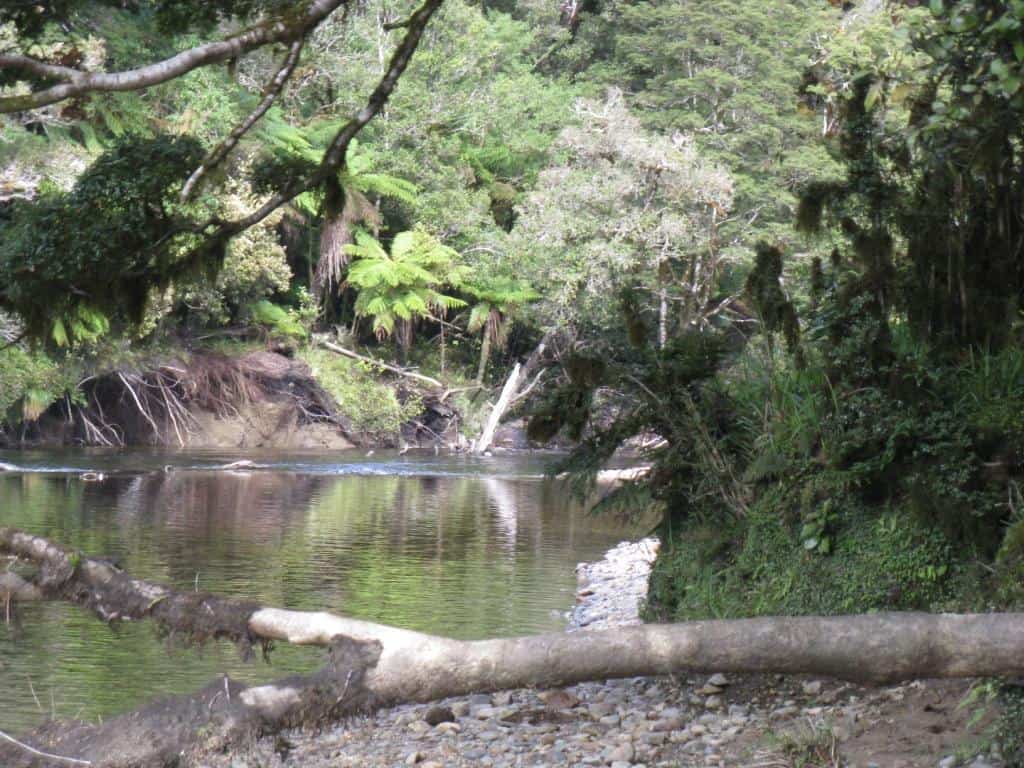
Even though I called this blog, ‘The Ultralight Hiker’ and if you have been following you will see that I have made many, many efforts to lighten the load we must carry in order to enjoy our wilderness experiences – you can too easily ‘throw out the baby with the bathwater’ as the old saying goes and find yourself up the proverbial ‘creek without a paddle’. Your kit can be too light too and result in some dreadful misfortune. Convenience has to be moderated by good sense.
These days you hear lots of stuff about ‘climate change’, but for geological time at least ‘climate change ‘ is glacially slow. Even today’s alarmists are warning of only a couple of degrees of warming or cooling (if it should happen), much less than we humans have already experienced in even our recent history when for example 500 years ago we grew crops and farmed Southern Greenland and grew wine in Scotland. A little earlier (geologically- only 15,000 years really) we survived whole continents which are habitable today being submerged under a kilometre of ice.
I guess everyone has the quite normal experience of temperature change of 20C pretty much every single day, and you don’t have to have lived long to have experienced double that in a single day. Extremophiles in the Antarctic plunge straight from saunas at +60C into snowdrifts at -40C (or more) to experience an instant temperature change of 100C+. The difference between the freezing and boiling point of water! Pretty much everyone who visits the South Pole is expected to endure this pleasure! Human beings can be quite tough – and bizarre!
Climate change as I said is slow, but weather change can be unbelievably fast. You can quite easily find yourself in just minutes experiencing temperature drops of 40C, often accompanied by drenching rain and enormous wind-chill which approximates to what those well-prepared Antarctic larrikins endure for fun.
Unless you are very well prepared indeed, such experiences will not be much fun at all – and may not even be survived. I have found myself the plaything of such extreme weather events many times and it led me to be more cautious than most ‘utralighters’. For example, I am always prepared for sub zero weather – even in summer! And you should be too. We have had people coming down from Northern Vic to us in Central Gippsland to buy stud Finnsheep in mid summer who have decided to take a scenic alpine route who have found their route blocked by snow and blizzard conditions. One was trapped for days. Thank goodness they had a diesel-powered vehicle and a good heater! I have encountered such conditions on a sunny autumn day at sea level, so beware!
I have written extensively in these pages about tricks and techniques which you need to survive and thrive in the wilds. Such posts as Ultralight Survival Made Easy and Secrets of Shelter for example. In ‘Windy Old Weather‘ I explain how to better ‘anchor’ your tent or shelter – lest it blow away.
Many ultralight shelters and tents on the market have too few tie-outs. I realise mine do too though they have more than most, probably twice as many. I intend to remedy this in future by sewing one on every 18″. A single tie-down point doesn’t even add half a gram. And you can always fashion extra pegs from tree branches if needed. I may even add more reinforcing ‘pockets’ to my tents so that I can add more support (bush) poles. It can get awfully windy sometimes.
A point I failed to mention in that last-mentioned post is that another reason for having horizontal tie-out ‘anchors is that you can heap logs and rocks on them to keep the tent on the ground. I have needed to do this sometimes and have even had a tent squashed flat by wind and rain but I stayed nice and dry as its waterproof skin was still there – on both sides of me.
A girl I was recently advising about a lightweight stove eschewed my DIY $4 and 20 Gram Roll-up Hobo Stove on the grounds that “lighting fires was not in her skill set” yet she was off on long walks in the backcountry without this vital survival skill ie The Secret of Fire (which weighs practically nothing) yet may too easily spell the difference between life and death, a fact which I hope she hasn’t found out before she learns how to light and maintain a warming fire.
Again people are always discussing what is the best electronic gadget or App to find their way in the bush – as if it wasn’t the one in their head, which will never go flat or be lost and will work every time if kept well-maintained with practice. You should master the skills begun in the post Finding Your Way, The Importance of Landmarks & etc.
Find some small valley which has ‘sides’ all around it from which you cannot possibly get lost then plunge right into it and wander around until you really can find your way unerringly with just the tools that birth gave you. You ought not to be out in the bush by yourself until you can find your way unaided.
Lots of folk talk about ‘multiple use’ which I agree has its place. However, so does redundancy. A single shelter or raincoat – especially a lighter (such utterly vital equipment) may not be enough. You can quickly be in dire trouble if you don’t have that one thing you must have in order to survive!
I have found a number of lost raincoats over the years in out of the way places – and one or two tents. Hopefully they were all lost in fine weather, but if not…We always try to double up on these three items even if I am only talking about having a couple of emergency space blankets which can become either an emergency shelter or raincoat.
At the moment (if/when I get a break from the numerous Spring farm chores) I am making a new ultralight 7 x 7 Multi Tarp (in .93oz/yd2 fabric) which can be all of poncho, ground or hammock shelter yet will weigh only around 200 grams. I will post a pattern soon. When Della and I travel together she will carry this and one <200 gram hammock so that if we are separated by some accident or misfortune she has her own shelter and spare raincoat which will help her survive whatever the conditions ie even if there is a foot deep of freezing water over the ground – a circumstance I have encountered!
I will carry a slightly heavier hammock (one which will take the weight of two people) so that we have a dry comfy seat where we can have a cook up and a dry lunch on a very wet, cold day such as you can expect to encounter, though your next trip may well be an endless springtime. This can be a life saver.
Similarly she carries an ultralight titanium cup and one of my 20 gram Hobo Stoves so she can do her own cooking (if necessary). This extra 43 gram pot also comes in handy when you want to make a cup of coffee at night without washing the dinner dishes – which I usually leave till morning rather than stumbling around near rivers in the dark.
She also carries our Satellite Messenger (our Poor Man’s Satellite Phone) while I carry the satellite phone (weight difference) so we both have emergency communications in case I get swept away by a river or something. When I am alone I carry both. ‘Better to be safe than sorry’. There’s another. You should have at least one reliable means of communication in case things get difficult, which they frequently do.
I said in the ‘About’ intro “I have seen the failure of just about every type of gear, and experienced just about every disaster which can befall you in the wilderness, and survived”. Just so you don’t think I always get/got it right. I have managed to do some stupid or forgetful things too – and I have certainly encountered many of those (potential) disasters which might have been the death of me – and mine. I have learned…
I/we have been (suddenly) caught out in awful freezing weather and in bushfires. I would sooner be carrying a woolen blanket in that eventuality but a cigarette lighter is vital in that situation (to create a backburnt area where you can shelter. If you have to lie up in a river as a fire passes, make sure your head is above water (and covered with wet cloth). Wool is best. We always have some woolen garments. Likely there will be a period of low oxygen when you pass out, probably with goannas and such (also sheltering from the fire) creeping over you!. It is embarrassing to survive a bushfire only to find you drowned!
We have often encountered flooded areas which are difficult or impossible to cross. Many times we have had to swim or make a raft of our sleeping mat and backpack and cross using them/it as a kick-board/float. Best to fold your pad in half then tie your pack on top. That Rope again. This creates a higher, more stable kickboard. Better to take all your clothes off even if it is freezing so at least they will be dry when you get to put them on again. However have a ditty bag with at least a lighter and a space blanket round your neck. You can get separated from your pack. On one occasion I was trapped by floodwaters for a week. On another for three weeks. A long time without food – from a store at least. You really should try it.
I really meed to do a post just about Surviving Water Hazards. A piece of rope is often a good idea. If I think I may need it (for such) I carry a long length of 2mm dyneema or spectra cord. Maybe 50-80 metres or more depending on the width of the stream you may have to cross. Such a cord has seen us safely across an impassable torrent more than once where we would otherwise have been stuck. I never travel without a least a length of 1mm dyneema sufficient to fashion extra tie-outs, make an emergency shelter or a kickboard raft for crossing rivers. A few grams which might save your life.
Another tip: always have two knives (something to cut the cord). We always believe that we have one but somehow it can be mislaid or lost. Even though I ‘always’ stow everything in my pack in the very same place (with the things I need most closest to the top – of course, but not so they can fall out – I will never trust zips) nonetheless recently I mislaid my Leatherman Micra (and have bought a new one). It must be at my last camp and will no doubt be there when I return in a few months’ time). I had a 5 gram scalpel knife along s well, and of course my trusty Ka-Bar’s Johnson Adventure Piggyback Knife – and I found you can cut your toenails with a scalpel (carefully). Nonetheless, lesson learnt. One is not enough.
The river height was up a couple of metres on our last trip. Too deep for small dogs to cross without being swept away.
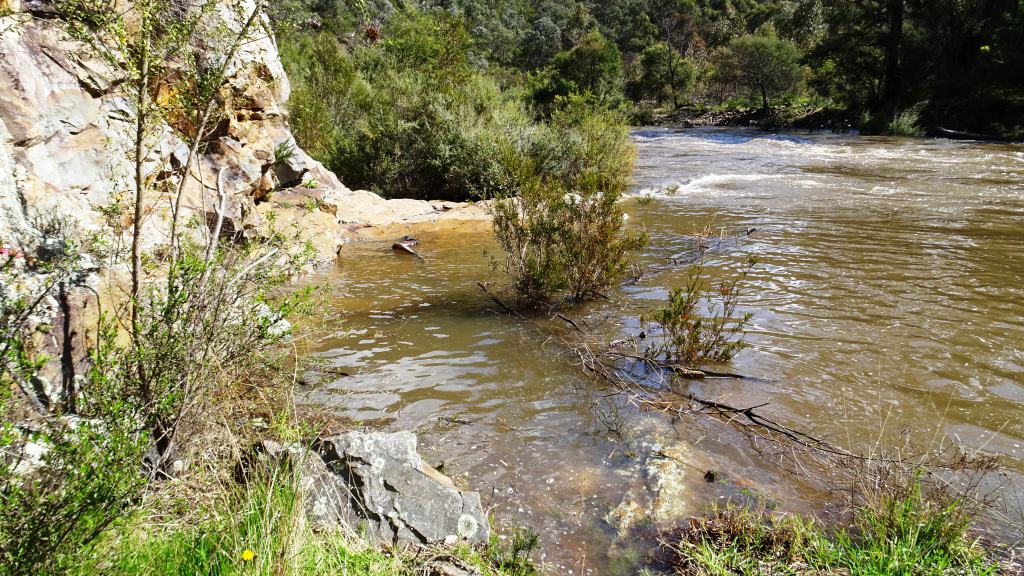
When such an emergency (as being trapped) becomes apparent to you (if not before) immediately cut your daily ration in half or by two thirds. A little is better than none at all, and you may not be so good at foraging as I am. Remember a healthy adult can survive around two months without any food at all! Likely the water will have gone down long before that. Be patient not foolhardy. Many are drowned each year trying to cross floodwater.
Only a week ago I went up the bush expecting to be gone a week or so. I had intended to go the day before but was delayed doing a small repair on the car before I went. Unfortunately during that time the river I had to cross came up so much we (Honey and I) could not both get safely across. I didn’t want to chance losing the dog, so after camping a night to see if it was going down (it wasn’t) we came all the way home again.
A pleasant night by the fire nonetheless.
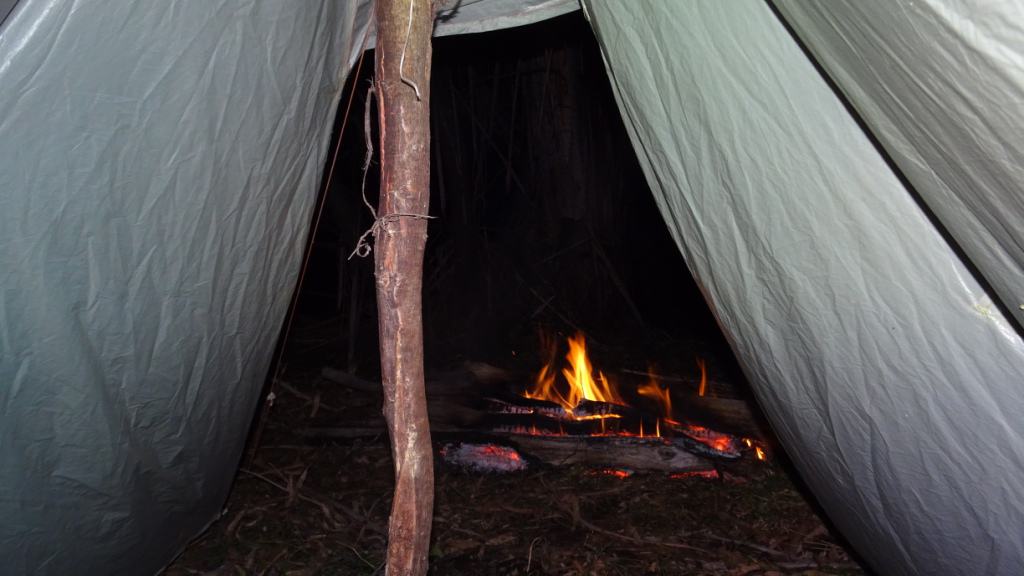
There will be another time (almost always true). Nine hours driving not to have a hiking trip – but it was fun, nonetheless. If we had made it across likely we would have still been there as the river doesn’t seem to have gone down much! Possum stew would have once again been on the menu. I used to plunk them by moonlight with a single shot .22 for that purpose when I was a tiny kid. Likely I can still manage it.
The bush was nice and green with spring growth though. The deer will be fat and have twins this year – and there will be bushfires later unless it keeps raining:
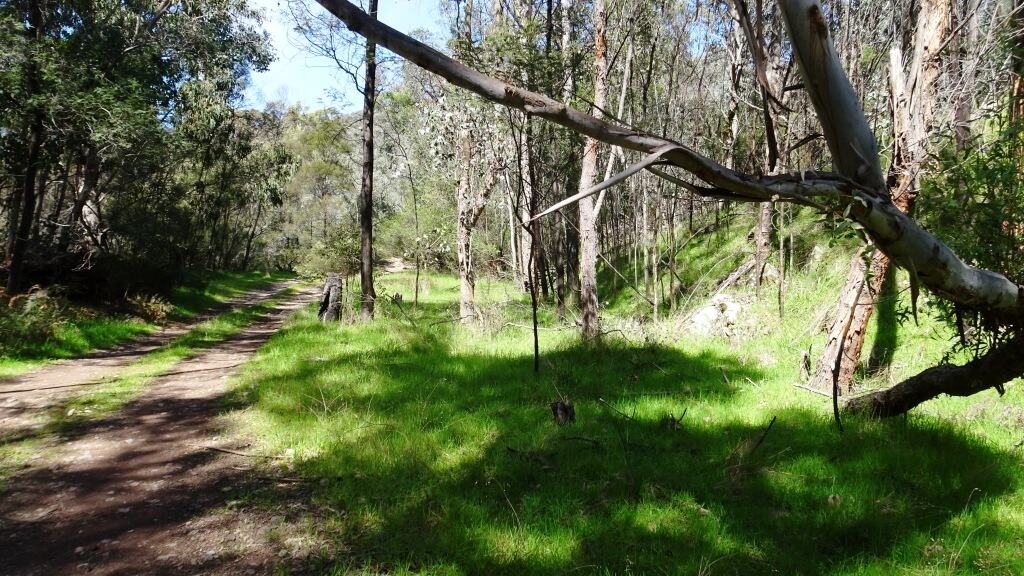
Usually/often I have a gun with me, which (though heavy – well, 500grams anyway) comes in handy in such situations. One might get a little tired over a diet of pretty much nothing but meat (I know I do) but it is sustaining and will keep one alive. Fat is important too. Rabbit by itself over time is too lean. A .22 is all you need for the pot. Ammo for one is cheap and light. A single shot like a Pack Rifle is all you need. No-one else needs to know you have it. It is easy enough even to make your own if you need/want to.
Plenty of feed about for these fellas higher up though:
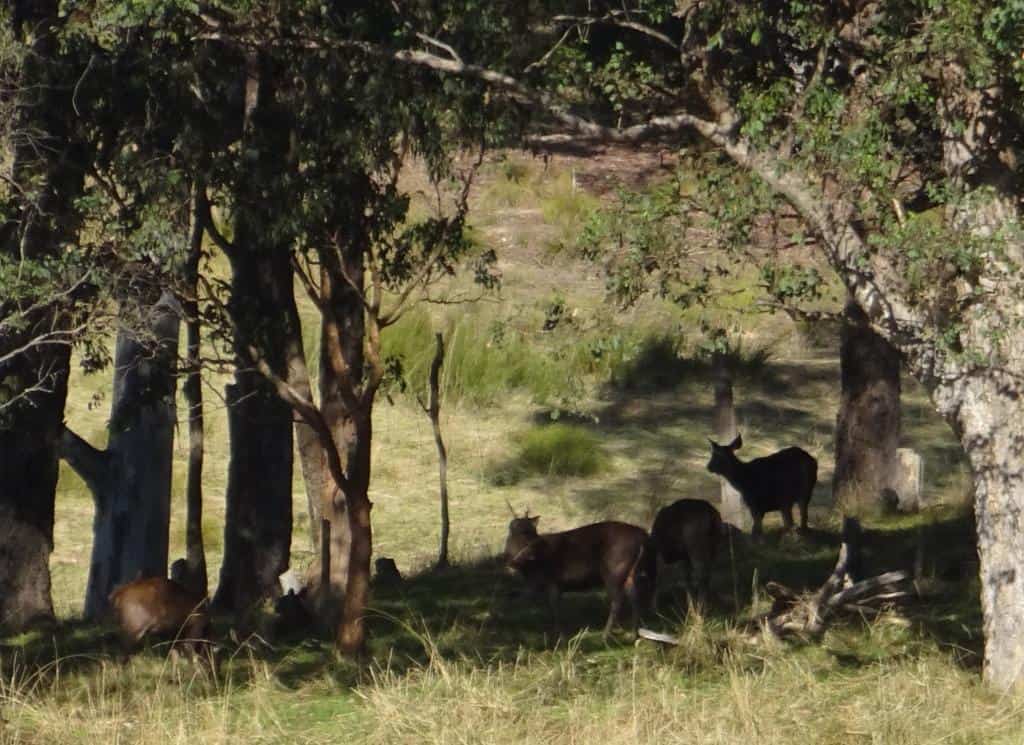
I also always have an Ultralight Fishing Kit, (not so much use I admit when the water is excessively muddy) and I have long ago familiarised myself with lots of edible things which can be found in the bush – even if they are not always particularly appetising, usually by having had to eat them on occasion.
When I was a kid a lot of rabbits and wallabies etc found their way into our family pot – else I wouldn’t be here now to tell about it. Even echidna is a delicacy. It helps that I grew up in the bush, miles from what you might mistakenly call civilisation, I guess.
Actually I have the reverse idea of how that works: In my experience the better the roads are the more uncivilised folks behave to each other, whereas the worse the roads get the more (or if there are none at all) they are more inclined to look after each other.
I think I always take too much food. But was it really? How many times have I come back from a week’s trip with pretty much a week’s food still in my pack? This may seem like unnecessary work (which it is – in retrospect) but when you find that you need that extra food (because of delays, misfortune – or sometimes just because you chose to linger in some delightful spot you never expected to – Oh, Yes!) it can be vital.
In the past folks used to carry lots of flour/meal (as food). It takes some beating actually, as does grain (eg rice/wheat etc) and so too porridge. Johnny Cakes (I have always loved them) and damper are quite sustaining (take up little room and do not readily spoil – if kept dry. Do use multiple waterproof liner bags) and you should consider adding them to your hiking recipe book. Better and more compact than all those very expensive fancy (inedible) hiking meals -and you can easily add a little meat or fish etc to them as you go along…
I think the modern gas hiking stoves are just silly, too heavy and a disaster just waiting to happen. (What do you do when the jet blocks?) Some places metho stoves have been banned (due to ‘fire hazard’/climate change – who knows what?) but if you think about how explosive an overturned gas stove is (and how easy a small metho fire is extinguished) you should see this for the folly it most certainly is.
But that is not really the point: If you are extremely limited as to cooking (not to mention staying warm) on account of limited fuel you really need to consider the desirability of one of my wood fuelled 20 Gram Hobo Stoves or similar. You need never run out of fuel so that if/when you find yourself cut off as I described before you will have some way of cooking all that Small Game, Ghost Shrimp and Other Small Fry you manage to scrape up between meals.
Similarly a nice cup of just plain hot water is just about as cheering on a cold day as any other cuppa when you run out of Java or tea etc. T-tree is called that for a reason though, and is just about ubiquitous in Oz. I usually do carry one of Tinny’s Gnomes and a small quantity of metho just for speed/convenience, but once I am cut off or in seriously bad weather I would conserve the meths for emergency fire starting. More later…
See Also:
